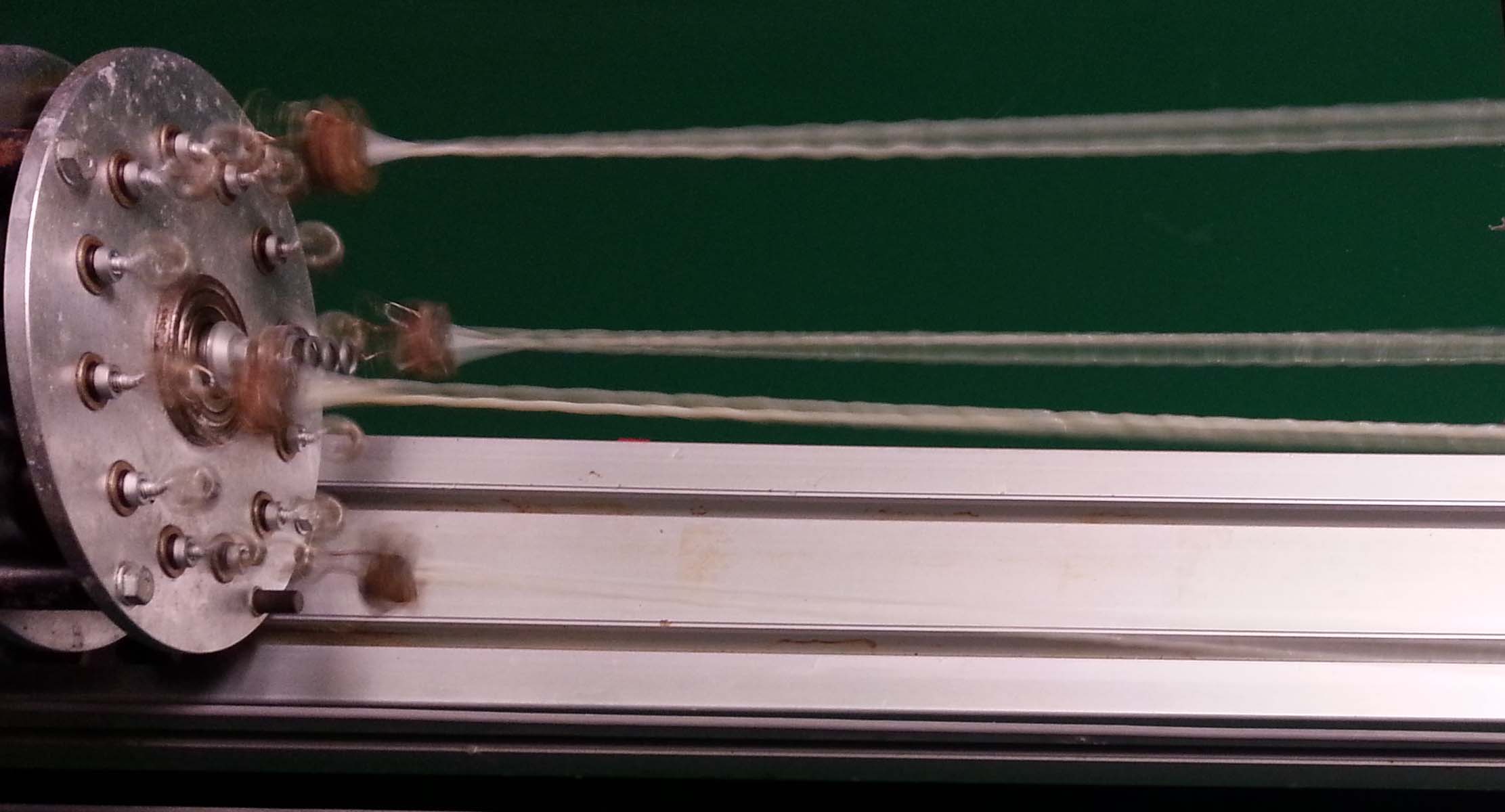There are various twisting systems, which make it possible to obtain gut strings with different characteristics.
The simplest one consists in fixing a bundle of guts from one end to a peg of the frame and from the other to a hook, which through a motor or a crank will rotate until you reach the desired degree of twisting: a string little twisted is more resistant and suitable for making cantini, a very twisted one is more fragile but more sonorous because it is softer, therefore suitable for bass gut strings, which tend to become unvoiced, being large and therefore more rigid.
The Cantini di Napoli belong to the category of simple twisted strings, for which, with the simplicity of twisting, the complexity of the drying and "rewinding" phase contrasts, thanks to which is possible to obtain a high sound quality and resistance to traction for the high and medium registers.
For bass strings, however, it is preferable, according to historical sources, to use the same technique used to make hemp ropes, which consisted of twisting two or more coupled guts together in one direction, and subsequently twisting them together in the opposite direction, to obtain a self-tightening string, which did not disintegrate once cut; the gut strings obtained with this procedure were called "cordoncini" by the Roman string makers, and are our Cordoncini di Roma.
Another type of twisting, reserved only for larger basses, was that of the "Cordoni": it was only thanks to my friend Adrien Alix, who suggested that I consult an historical source unknown to me, that I rediscovered the ancient technique used for twisting such strings, made of only two ends, extremely pre-twisted.
This is how the Cordoni di Roma were born, an absolutely "historical" type of string with excellent acoustic performance.
As in all self-respecting craft shops then, the Master must not only follow the tradition but, if possible, must find tricks to further improve the quality of his products: this is how the Cordoni Cordedrago are born, made with a very complex twisting, which guarantees maximum softness of the string, and consequently of the richness, power and promptness of sound. They are obviously not historical strings, but I think the best choice for great bassess.

